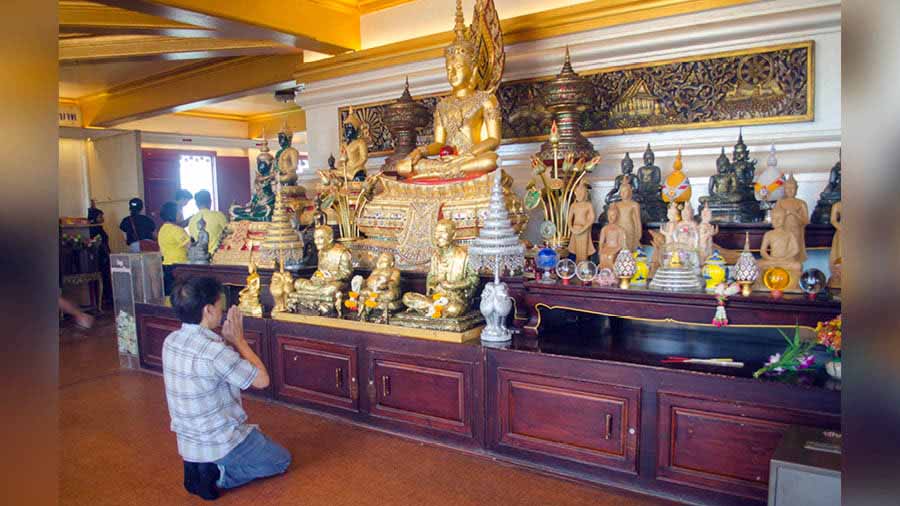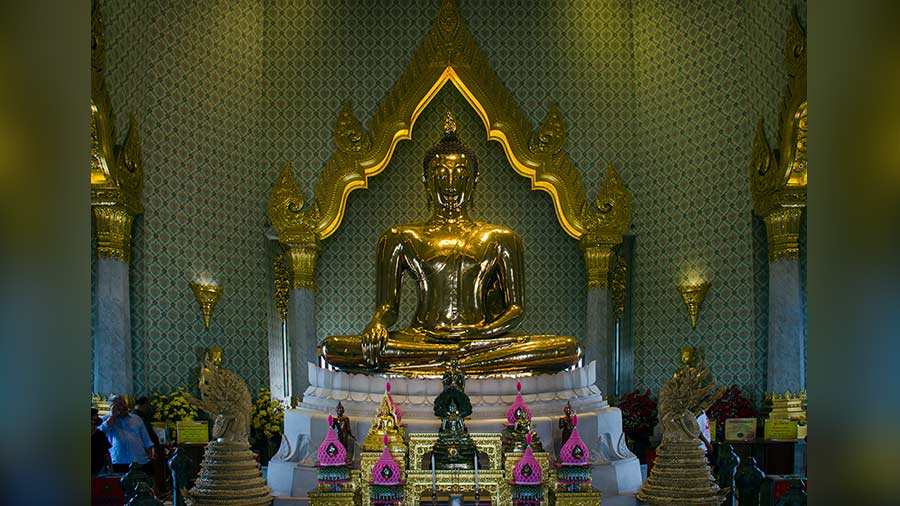It might sound like a cliché, but the best travel plans are the ones that are never made. My quest to deviate from tried-and-tested itineraries in Bangkok took me on a journey through time. This wasn’t a high-adrenaline adventure, but it began with a commute on a local bus from the Bangkok Bus Terminal (also known as Chatuchak or Mochit 2) and took me to a city that was once the pride of Thailand, its erstwhile capital, and a city that was home to a million residents at its pinnacle.
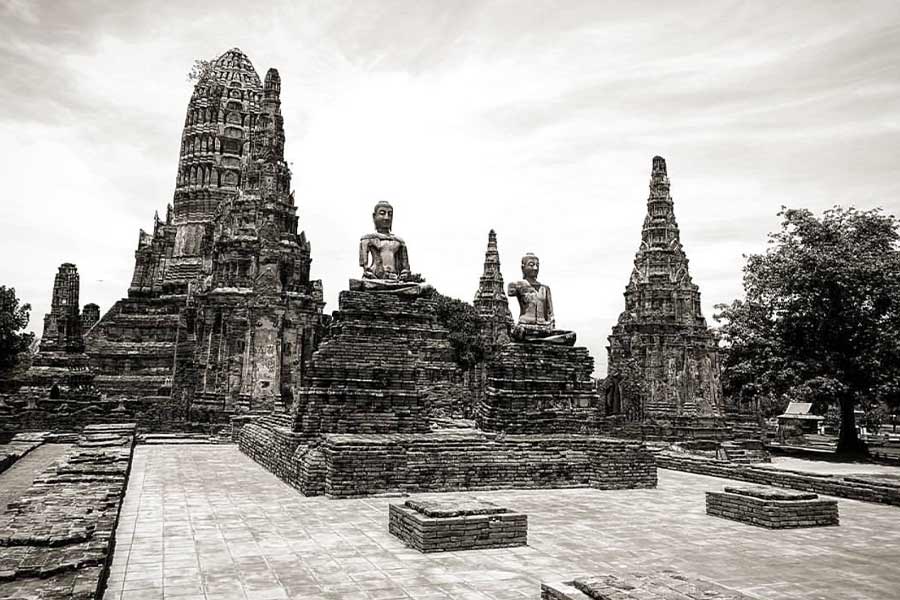
A black-and-white image of Wat Chaiwatthanaram
Ayutthaya might have a familiar ring to it. That’s because the city took its name from Ayodhya, the birthplace of Lord Ram. All the monarchs of the Chakri dynasty, Thailand’s current ruling royal house, are referred to as King Rama. It was Rama I who moved the capital from Ayutthaya (the capital from 1351 to 1767) to Bangkok after the city was pillaged by the Burmese army in 1767.
In 1969, Thailand’s Fine Arts Department (akin to the Archaeological Survey of India) embarked on one of its most ambitious restoration projects. The restoration programme of Ayutthaya was instrumental in the Ayutthaya Historical Park winning recognition as a UNESCO World Heritage Site in 1991. Most people (myself included) will tell you that a leisurely cruise along the Chao Phraya River is probably the best way to travel to Ayutthaya from Bangkok. But that may not work for impulsive plans like my bus ride. Ayutthaya’s location along the riverfront earned it the ‘Venice of the East’ sobriquet when the Ayutthaya kingdom was in its ascendancy.
I chose the comfort of a cab to take me around Ayutthaya as soon as I disembarked from the local bus. You will find a long line of cabs and tuk-tuks who are programmed to take day trippers around the main sights. I had to tap into my best negotiating skills for a half-day trip around the key landmarks. You can cover these sites in a day (just focus on the sights that are contained within the Ayutthaya Historical Park) or check into a hotel in New Ayutthaya city and spend a couple of days here. With over 300 sites, Ayutthaya has enough history and ruins to keep you occupied for days on end.
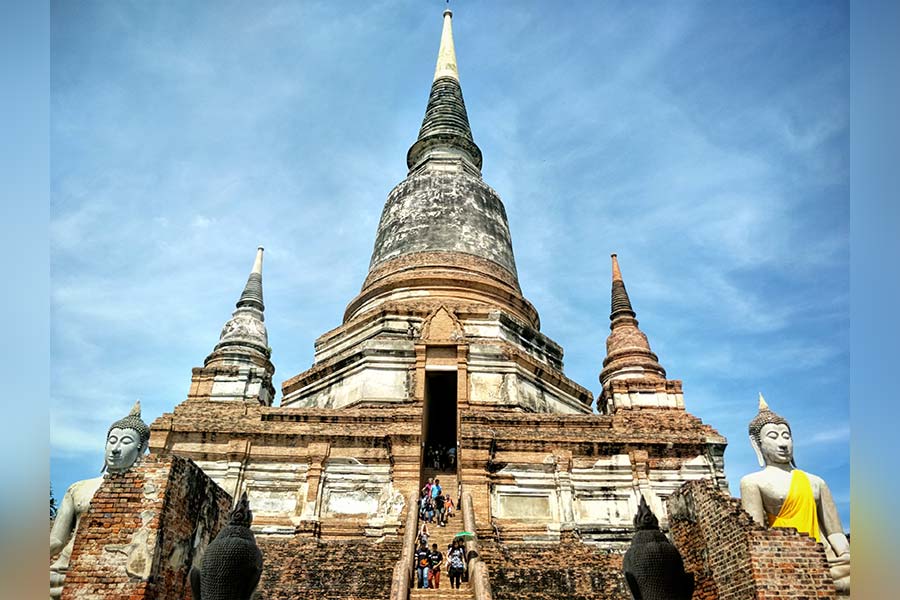
Wat Yai Chai Mongkhon
The towering chedi (stupa) of Wat Yai Chai Mongkhon is one of the tallest structures within the Ayutthaya Historical Park. The chedi was built in 1592 to commemorate the victory of Ayutthaya King Naresuan over the Burmese. This monastery was originally constructed in the 14th century and is still home to Buddhist monks. A dramatic stairway leads up to the entrance of the 60-metre-tall bell-shaped chedi. You can access a small chamber that contains several images of Buddha embellished in gold leaf. However, it’s the temple’s massive seven-metre-long reclining Buddha (one of the largest in Thailand), draped in a shiny yellow robe, that is the temple’s most photographed landmark. Though, it’s not the most photographed Buddha within Ayutthaya.
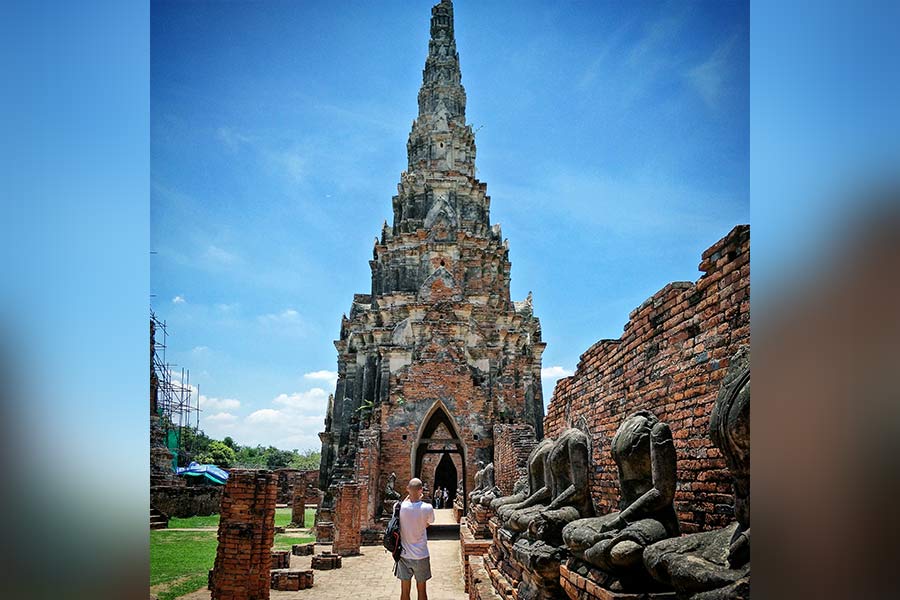
Wat Mahathat in Thailand
That honour belongs to the Buddha head that seamlessly merges into a tree trunk at Wat Mahathat (also known as the Temple of the Great Relics), located at the very centre of the Ayutthaya Historical Park. There are many local theories on how this serene image of Buddha became entwined with the tree. The temple was vandalised by the Burmese army in 1767, who also destroyed many Buddha images. The tree might have grown around one of these Buddha images, while some suggest that a thief moved the head from the main temple and hid it. Large sections of this temple collapsed in the early 1900s, but the restoration process ensured that the base of the main prang (tower) has survived. This 14th-century temple is enshrined in Ayutthaya legends because it housed the Buddha’s relics and was also the home of the Supreme Patriarch, or head of the Thai Buddhist monks, during the heyday of the Ayutthaya Kingdom.
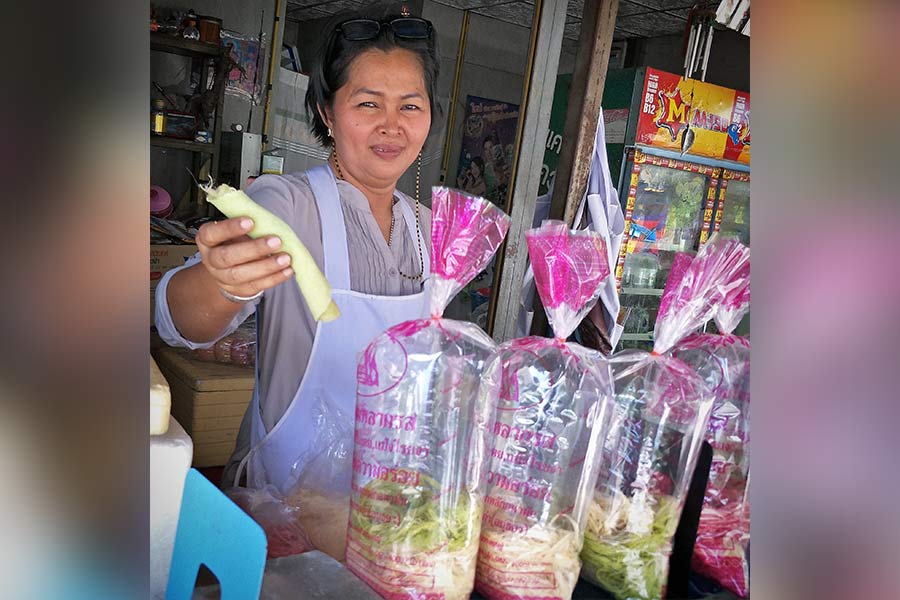
Roti Samai has its origins in India. It's a thin crepe inspired by an Indian roti that gets its greenish tinge from the pandanus leaf
You’re never far away from street-food delicacies anywhere in Thailand. My quest for Ayutthaya’s very own Roti Samai provided the perfect detour in the middle of intense temple hopping. The dish has its origins in India — a thin crepe inspired by an Indian roti that gets its greenish tinge from the pandanus leaf. This sweet crepe is stuffed with cotton candy, thin silk strands in a rainbow of colours.
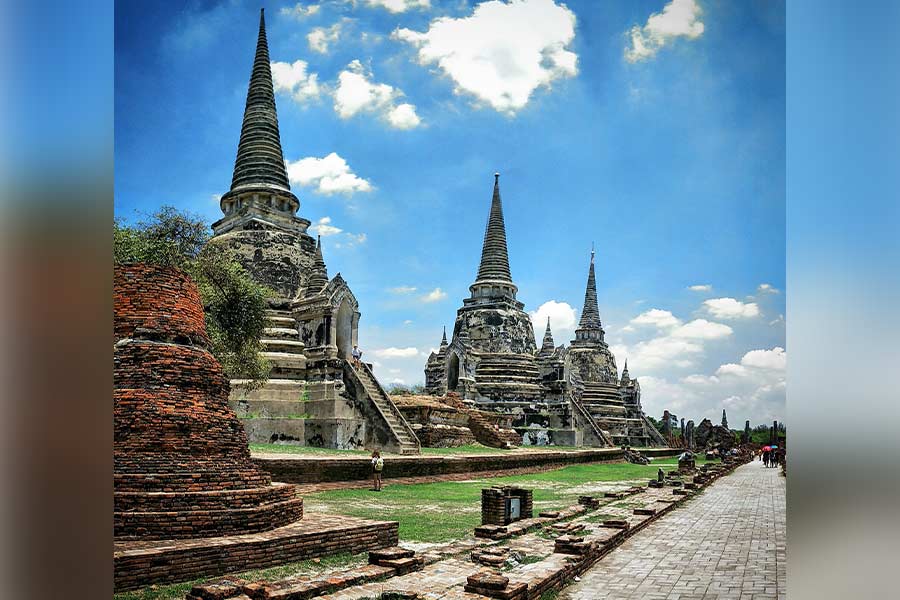
Wat Phra Si Sanphet in Ayutthaya, near Bangkok
Even though I was racing against the clock, I still managed to make time to visit Wat Phra Si Sanphet, the temple of the Royal family and one of the grandest in Ayutthaya. It was used exclusively for Royal ceremonies. The three chedis of the temple take you back in time. The temple served as the model for Bangkok’s iconic Wat Phra Kaew (Temple of the Emerald Buddha). If Bangkok represents the perfect medley of the old and the new, Ayutthaya is where time stands still — a perfect contrast to Bangkok’s hustle.

